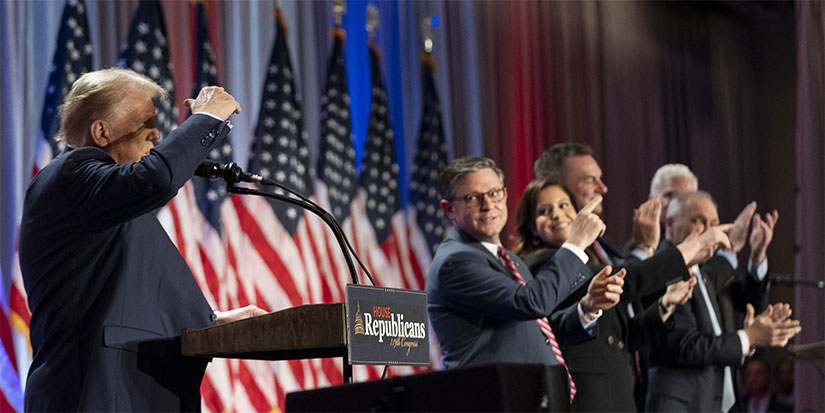
The Future’s So Bright
Trump won, Republicans swept, and half the country is deliriously happy. Not that I don’t get it—I’m all for a pro-growth explosion of economic activity.
But let me ask you a question: What is the chance that Trump will serve four years and there won’t be a bear market throughout his entire term?
Or… what is the chance that Trump serves four years and there won’t be a recession throughout his entire term?
From ChatGPT:
Historical Probability of a Bear Market
Historically, bear markets have occurred roughly once every 3 to 5 years. In terms of stock market cycles:
-
The average duration of a bear market is around 1 to 2 years, though this can vary significantly.
-
On average, the stock market experiences a bear market about every 3.5 years, though this is based on US data (primarily S&P 500).
Given this, over a 4-year period, the probability of a bear market is somewhat high. The historical frequency of bear markets suggests that the chance of one occurring over a given 4-year span could be in the 30–40% range. However, this is a rough estimate and depends on factors like market conditions, geopolitical events, and other economic developments.
I wonder if there is any conditional probability of having a recession given that we haven’t had one in 16 years. I am excluding the COVID one. If you haven’t had a recession in four years, is the probability higher?
Predictions Are Hard, Especially About the Future
Here is the point that I am trying to make: The way people are behaving right now, it’s as if many believe that stocks and the economy will be up and to the right over the next four years, as we experience the biggest boom in history. Now, that might happen. My experience with these sorts of things is that economic policies usually work with a long lag.
For example, remember the Laffer Curve? Remember when Art Laffer told Reagan that you could cut taxes and actually increase tax revenue? It worked! But not while Reagan was president. In fact, it really didn’t kick in until the second half of the 1990s. Yes, Trump is going to have pro-growth policies, but we might not feel the effects of them for a while. I will also point out that when Reagan was elected, there was a big recession shortly thereafter (as Volcker raised rates), and stocks didn’t really get going until 1984.
The stock market is up since the election, and everyone is happy about it. It might not be up this week, next week, this month, next month, or next year. The relationship between stock prices and presidential policies is pretty weak. Stocks went up under Biden, after all, for a recent counterexample. Keep your eyes peeled and your head on a swivel.
There is also the Fed to take into account. It hasn’t been a week, and already the Fed is making noises about stopping the rate cuts. People consistently underestimate how political the Fed is. Federal Reserve employees donate to Democrats over Republicans at a rate of over 10 to 1. Don’t think that the Fed won’t hike rates to screw Trump. It will find an economic justification for it. You can find an economic justification for anything.
I think we will see an epic collision between the Trump administration and the Federal Reserve in his second term, and it won’t be pretty. Probably market-moving, as well. This is also the same Fed, I should remind you, that waited until right before the election to cut a surprise 50 basis points. You’re a detective now, son; you’re not allowed to believe in coincidences anymore.
I’m Enjoying This
I’m not trading it very well, but I’m enjoying it. One nice side benefit of the Trump victory is that it seems to have awakened some animal spirits—everyone is interested in the markets again. Maybe I should be more bullish.
There is a lot of good and bad that will come from a second Trump term, but perhaps the best thing that will come of it will be a complete dismantling of the coercive regulatory state. The government bureaucracy has grown by leaps and bounds since 2008 when Obama began pouring resources into it. It is now a giant, malignant homeowners association of do-gooders.
One of the few people who has had the courage to speak out about it is Elon Musk… about how he had to put headphones on seals. The banking industry has been used as an ATM by the regulators since the financial crisis. All of this is coming to an end, and private enterprise can breathe again. That is a good thing.
These four years will not be squandered. Trump and his team will act fast. I doubt there will be any getting bogged down in the mean tweets this time.

Jared Dillian, MFA
P.S. With markets ripping post-election, now is the time to look ahead to 2025. That’s why my team and I want to take the temperature of the Jared Dillian Money crew—to learn what’s top of mind for you, what you’re worried about, and how I can best help. Click here to get started.
|